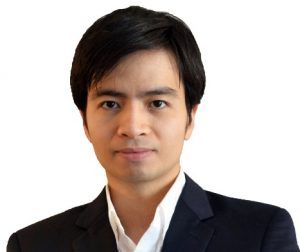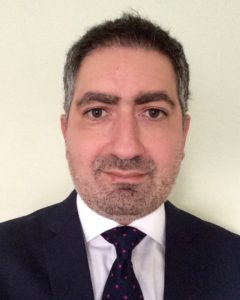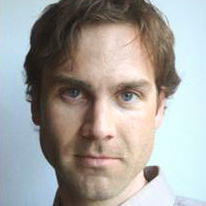Join us to learn about the exciting research that some of our Faculty and their groups are doing at our Department at our ME Lightning Talks! Pizza will be provided. Since space is limited, this event is limited to ME graduate students and faculty, and a limited number of ME undergraduate seniors. If you are an undergraduate senior and would like to attend, please RSVP at https://goo.gl/forms/HypP70ShGSqKTNay2 (spots will be granted in the order that confirmations are received until capacity is filled). You will receive later in the week an email confirming your attendance.
 Prof. Thanh Nguyen – Novel processing of biodegradable and biocompatible polymers at small scales for medical applications. Biodegradable polymers have a significant impact to medical field. In my talk, I will present researches which aim to further fabricate and process the polymers at small scales, enabling their special functions for use in important medical implant devices. The first part of this talk will be focused on a novel manufacturing technology, which allows to create versatile 3D microstructures of biodegradable polymers for vaccine/drug delivery. The second part of this talk will be emphasized on a new approach, which enables the polymers to be electromechanically-active for use in an implanted biodegradable force-sensor. The presented works, while significantly enhancing functionality and usefulness of the polymers, do not compromise their excellent biodegradability and biocompatibility for medical use.
Prof. Thanh Nguyen – Novel processing of biodegradable and biocompatible polymers at small scales for medical applications. Biodegradable polymers have a significant impact to medical field. In my talk, I will present researches which aim to further fabricate and process the polymers at small scales, enabling their special functions for use in important medical implant devices. The first part of this talk will be focused on a novel manufacturing technology, which allows to create versatile 3D microstructures of biodegradable polymers for vaccine/drug delivery. The second part of this talk will be emphasized on a new approach, which enables the polymers to be electromechanically-active for use in an implanted biodegradable force-sensor. The presented works, while significantly enhancing functionality and usefulness of the polymers, do not compromise their excellent biodegradability and biocompatibility for medical use.
 Prof. Georgios Matheou – Numerical model error in simulations of turbulence. Although turbulent flows are prominent and ubiquitous in many applications, their prediction remains challenging. Simulation has the potential to become the primary tool for discovery by utilizing recent advances in computing power. Thus, high fidelity simulations with good characterization of model errors are required. A study of numerical model error in passive scalar mixing is discussed. The range of values of scalar fields in turbulent flows is bounded by their boundary values, for passive scalars, and by a combination of boundary values, reaction rates, phase changes, etc., for active scalars. In practice, this fundamental constraint is often violated with scalars exhibiting unphysical excursions. Analysis of scalar-excursion statistics shows that unphysical scalar excursions in large-eddy simulations result from dispersive errors of the convection-term discretization where the subgrid-scale model provides insufficient dissipation to produce a sufficiently smooth scalar field.
Prof. Georgios Matheou – Numerical model error in simulations of turbulence. Although turbulent flows are prominent and ubiquitous in many applications, their prediction remains challenging. Simulation has the potential to become the primary tool for discovery by utilizing recent advances in computing power. Thus, high fidelity simulations with good characterization of model errors are required. A study of numerical model error in passive scalar mixing is discussed. The range of values of scalar fields in turbulent flows is bounded by their boundary values, for passive scalars, and by a combination of boundary values, reaction rates, phase changes, etc., for active scalars. In practice, this fundamental constraint is often violated with scalars exhibiting unphysical excursions. Analysis of scalar-excursion statistics shows that unphysical scalar excursions in large-eddy simulations result from dispersive errors of the convection-term discretization where the subgrid-scale model provides insufficient dissipation to produce a sufficiently smooth scalar field.
 Prof. Dianyun Zhang – An Integrated Multi-Scale and Multi-Physics Modeling Tool for Advanced Composite Structures. Fiber-reinforced polymer matrix composites have been increasingly used in aerospace structures owing to the weight and life-cycle cost savings they provide. However, manufacturing these lightweight materials involves curing an epoxy resin under elevated temperatures, which inevitably results in dimensional change and residual stress build-up. To minimize these manufacturing-induced imperfections through an optimal cure cycle, it is critical to develop a physics-based process model underlying the fundamentals of resin curing kinetics and the correlation between the process parameters and the final structural performance. In this talk, an integrated multi-physics and multiscale model will be used to predict the residual stress generation and dimensional change of a composite laminate. Predictions of the warpage of an unsymmetrical panel and the spring-in angle of an L-shaped composite flange will be used to illustrate the advantages of the proposed modeling tool.
Prof. Dianyun Zhang – An Integrated Multi-Scale and Multi-Physics Modeling Tool for Advanced Composite Structures. Fiber-reinforced polymer matrix composites have been increasingly used in aerospace structures owing to the weight and life-cycle cost savings they provide. However, manufacturing these lightweight materials involves curing an epoxy resin under elevated temperatures, which inevitably results in dimensional change and residual stress build-up. To minimize these manufacturing-induced imperfections through an optimal cure cycle, it is critical to develop a physics-based process model underlying the fundamentals of resin curing kinetics and the correlation between the process parameters and the final structural performance. In this talk, an integrated multi-physics and multiscale model will be used to predict the residual stress generation and dimensional change of a composite laminate. Predictions of the warpage of an unsymmetrical panel and the spring-in angle of an L-shaped composite flange will be used to illustrate the advantages of the proposed modeling tool.








 Assistant Professor David Pierce will be deploying his Interdisciplinary Mechanics Laboratory to tackle three projects that just received funding: two from the National Science Foundation (NSF) and one from the U.S. Army Natick Soldier Research Development and Engineering Center (NSRDEC).
Assistant Professor David Pierce will be deploying his Interdisciplinary Mechanics Laboratory to tackle three projects that just received funding: two from the National Science Foundation (NSF) and one from the U.S. Army Natick Soldier Research Development and Engineering Center (NSRDEC). 
